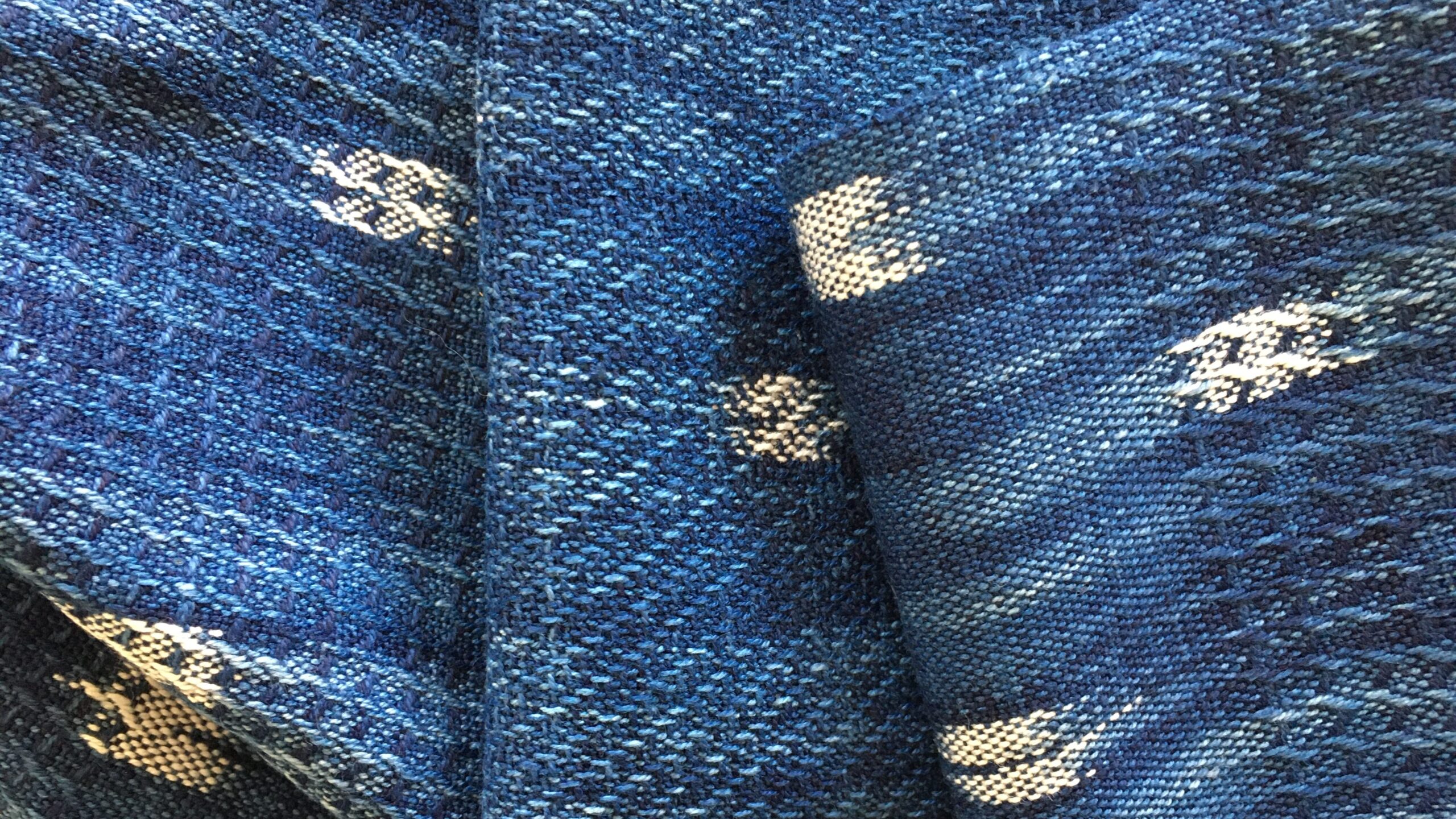
Humans have been using Indigo for a long time. The oldest known fabric dyed indigo, dated to 6,000 years ago, was discovered in Huaca Prieta, Peru. Although indigo dye is not a simple process, it is fascinating that in many parts of the world, people have found various techniques to extract blue dyes from indigo-containing plants and creating blue fabric for thousands of years.
In Asia, from India to Indonesia, Laos, Vietnam, China, Korea, Japan… Indigo has been used as a blue textile dye for everyday clothes, for poor and for rich. The hotter tropical regions cultivated Indigofera Tinctoria, more wetter tropical climate regions used Strobilanthes Cusia and colder temperate climate regions cultivated Persicaria Tinctoria. Many of the techniques used in Asia are water-extraction to obtain indigo pigment cakes or wet paste, then to use bacterial fermentation to create a reduction environment in a vat. In mainland Japan, instead of water extraction, they compost the leaves to create a dye colour source called “Sukumo”. This Sukumo technique is similar to the cocagne/ couched woad technique used in Europe.
“Throughout West Africa, Indigo was the foundation of centuries-old textile traditions. For example, from the Tuareg nomads of the Sahara, clothes dyed with indigo signified wealth. Women dyed the cloth in most areas, with the Yoruba of Nigeria and the Mandinka of Mali particularly well known for their expertise. Among the Hausa male dyers, working at communal dye pits was the basis of the wealth of the ancient city of Kano, and they can still be seen plying their trade today at the same pits.” (from wikipedia)
“In the Middle East, Palestine and Iran also historically produced large amounts of indigo. In Palestine, it was a major industry since at least the 17th century. It was used to dye southern women’s dresses, coats in Galilee, pants all over, and men’s cloaks.” (from wikipedia)
There are several species of plants that contain Indican, a precursor of Indigo/Indigotin. In Europe, for a long time people used Isatis tinctoria (woad, färberwaid, pastel) to obtain indigo. In the 18th century, indigo pigments produced in colonized India and America started to come into Europe. In India for centuries, people have cultivated Indigofera Tinctoria and water-extracted indigo pigments to produce dry concentrated indigo pigment cakes. As the Europeans colonized India, they forced farmers in Bengal to produce indigo pigments in mass to export to Europe. As Indigofera Tinctorias contain much more indigotin than Isatis Tinctoria. Dyers in Europe valued Indian indigo as they can achieve deeper blue color with them. This resulted in slowly replacing indigo made of woad in Europe to imported indigo pigments from colonized countries.
In the end of the 19th century, German chemists Adolf von Baeyer and Viggo Drewsen invented a way to synthesize indigo and Johannes Pfleger and Karl Heumann at the BASF established the industrial mass synthesis process. By the middle of the 20th century almost all the indigo pigments used in commercial dye practice had been replaced with industrially produced synthetic dye, worldwide. ( ref: Indigo, Jenny Balfour-Paul)
Now, we have to consider the impact of synthetic dye vs. natural dye.
When Europe was producing natural indigo dye in colonized countries, it involved slave and exploitative labor to produce mass amounts demanded in Europe. In colonized India, it caused widespread famine among local farmers causing “blue mutiny” of 1859-1862. The rise of synthetic dye freed them from these unsustainable agricultural productions.
On the other hand, use of synthetic dye in industrial manufacturing is causing massive pollution due to its use of toxic chemicals in the process and its traces in wastewater.
Today, over 1.24 billion pairs of jeans are sold annually worldwide using 50,000 tons of synthetic indigo dye per year in 2011, for example.
If we dye all the blue jeans consumed worldwide today with natural indigo, we will need to cultivate a massive amount of indigo plants.
“Considering the global perspective, we estimate that replacing global synthetic indigo production with natural indigo from the compost process would require about 3,300 square miles (8600 square kilometers) of indigo production” (Fibershed, project Indigo)
If we were to think of sustainable everyday clothes, it is not about replacing synthetic dye with natural dye, but we need to replace the status quo in our head.
How many pairs of jeans do I really need to own (given that I have only 2 legs)? Do I need stone-washed “new” jeans that look used? Am I fashionable if I own the latest design? Do I look proper when I wear new and clean clothes?
The Circular Blue project proposes for urban inhabitants (like myself!) to experience what it takes to produce blue textile dye in sustainable and circular ways. Hopefully, it triggers a change in our understandings of fashion and a change in the culture of clothing.